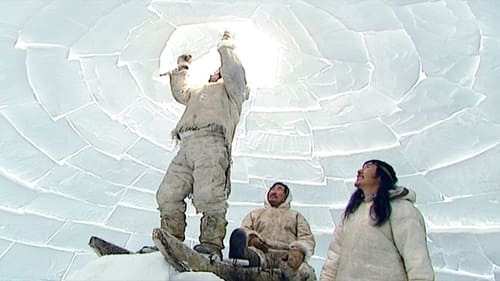
Art Direction
Based on the journal of Knud Rasmussen's "Great Sled Journey" of 1922 across arctic Canada. The film is shot from the perspective of the Inuit, showing their traditional beliefs and lifestyle. It tells the story of the last great Inuit shaman and his beautiful and headstrong daughter; the shaman must decide whether to accept the Christian religion that is converting the Inuit across Greenland.

Dialogue
Based on the journal of Knud Rasmussen's "Great Sled Journey" of 1922 across arctic Canada. The film is shot from the perspective of the Inuit, showing their traditional beliefs and lifestyle. It tells the story of the last great Inuit shaman and his beautiful and headstrong daughter; the shaman must decide whether to accept the Christian religion that is converting the Inuit across Greenland.

Qulitalik / A shaman (as Paul Qulitalik)
Basada en una leyenda milenaria de un pueblo indígena canadiense, narra la historia de una maldición provocada por un diabólico chamán. Los malos espíritus provocaron un conflicto entre dos familias que saltó generación tras generación. Hablada en lenguaje Inuktitut, lengua indígena de algunas tribus indias del norte de Canadá, obtuvo excelentes críticas por parte de todos los medios norteamericanos, sin excepción.

Writer
Basada en una leyenda milenaria de un pueblo indígena canadiense, narra la historia de una maldición provocada por un diabólico chamán. Los malos espíritus provocaron un conflicto entre dos familias que saltó generación tras generación. Hablada en lenguaje Inuktitut, lengua indígena de algunas tribus indias del norte de Canadá, obtuvo excelentes críticas por parte de todos los medios norteamericanos, sin excepción.

As summer ends near Igloolik in the 1930's, three families build a saputi to trap fish going upriver for the winter. The days are getting shorter and young people daydream, while waiting for fish to come. But nature is not always predictable.... [Third Isuma recreated fiction, 1993.]

Producer
As summer ends near Igloolik in the 1930's, three families build a saputi to trap fish going upriver for the winter. The days are getting shorter and young people daydream, while waiting for fish to come. But nature is not always predictable.... [Third Isuma recreated fiction, 1993.]

For the Igloolik Inuit, summer is the time of Nunaqpa, 'going inland,' that is, hunting for caribou to get sufficient meat provisions for the cold winter ahead. During a summer in the 1930s, two Igloolik families go hunting, while an old couple awaits their return.

Four Inuit families build a qaggiq, a large communal igloo, to mark the approach of spring with singing and games. A young man woos a girl but her parents are in disagreement over whether he shall get to marry her.






